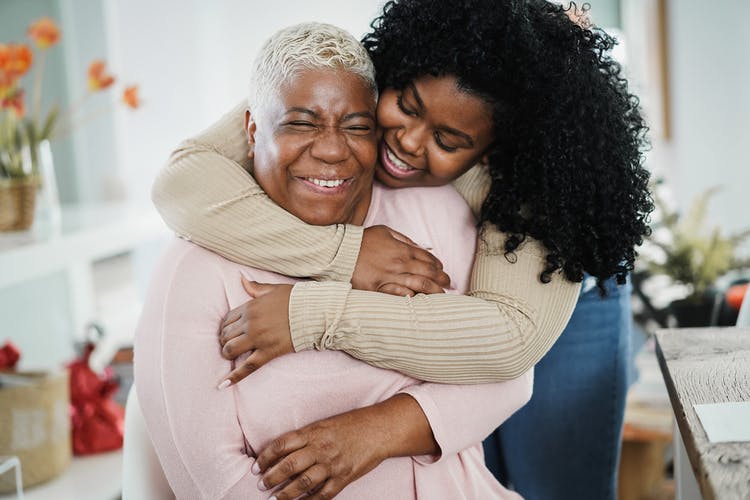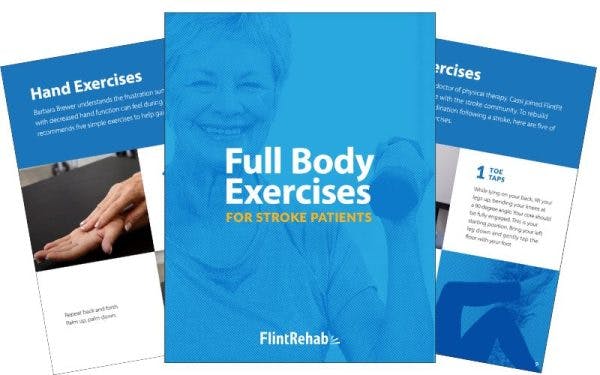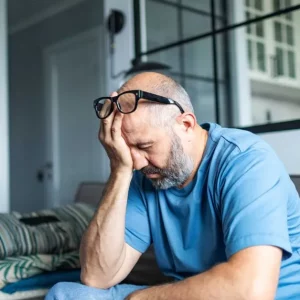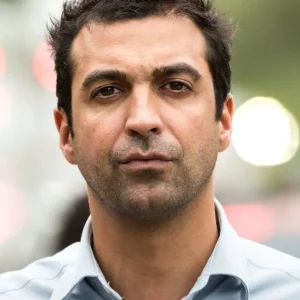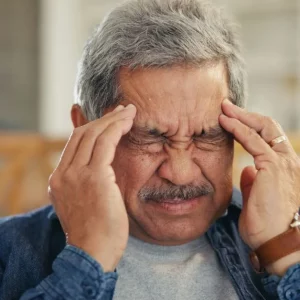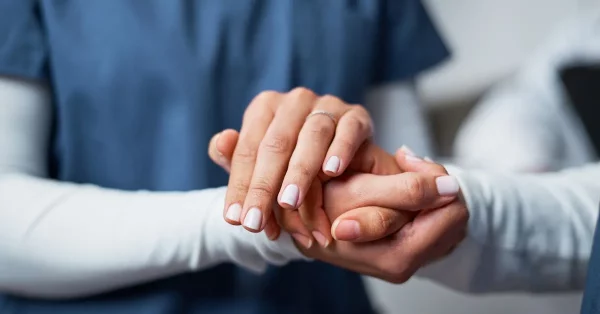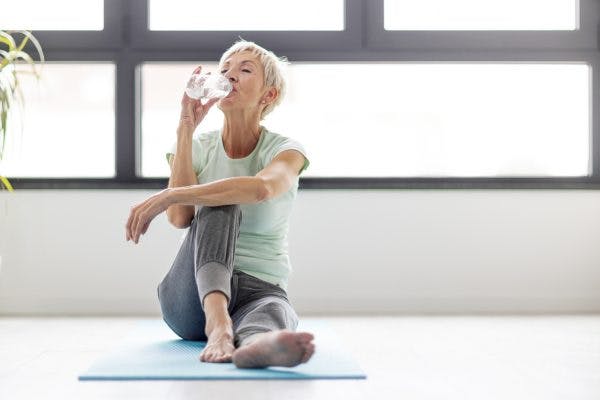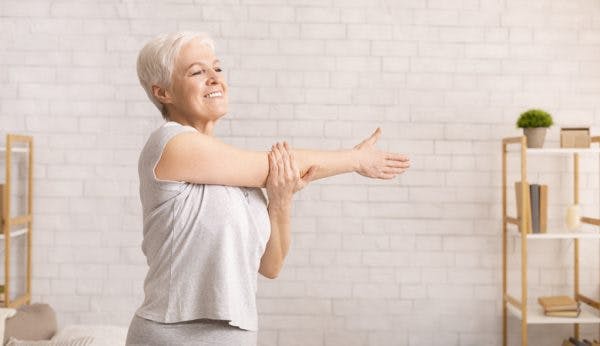Post-traumatic stress disorder, or PTSD, is often associated with military combat. However, PTSD can also occur after a stroke in some survivors — because they are exactly that: survivors.
Typically, PTSD occurs after external traumatic events such as military combat, natural disasters, physical assault, or near-death experiences. However, more internal events such as a stroke or heart attack are becoming commonly recognized as causes of PTSD.
To help you understand how stroke can cause PTSD, this article will discuss:
- Causes of PTSD after stroke
- Symptoms of PTSD
- Treatments for PTSD
- Turning trauma into growth: “post-traumatic growth”
The Causes and Prevalence of PTSD After Stroke
The development of PTSD after stroke could be more common than previously thought. A meta-analysis of 9 post-stroke PTSD studies reported that about 25% of individuals who survive a stroke or TIA (transient ischemic attack or “mini stroke“) develop significant PTSD symptoms.
To understand the link between stroke and post-traumatic stress disorder, it’s important to look at the survivor’s experience both during the onset of the stroke and during life after stroke.
Many survivors report feelings of fear during the onset of stroke. For example, when asked what a stroke feels like, some survivors recollect feeling dazed and confused while others are aware of what’s happening and may even struggle to call for help due to a sudden loss of motor control (which is a common symptom). When you put yourself in the shoes of a survivor, it quickly becomes clear how a life-threatening condition can cause trauma.
When a stroke is treated successfully, the survivor begins the recovery process. This process is full of hard work, and it can be a long journey for those that sustained significant secondary effects, such as paralysis or loss of speech.
These secondary effects can impact a survivor’s ability to engage in their previous lifestyle and roles. For example, if the individual requires caregiving, it can change the dynamic at home; and if the individual cannot perform their necessary tasks at work, they may lose their job. As a result, some survivors report feelings of isolation and loneliness due to the impact of their stroke on their lifestyle and social interactions.
Another long-term consequence of stroke that elicits fear is the possibility of recurrent stroke. The risk of stroke increases after an individual’s first stroke, which can cause anxiety knowing that another stroke can occur at any moment.
The combination of these fears and changes in life circumstances can lead to the development of PTSD.
Symptoms of Post-Traumatic Stress Disorder
Post-traumatic stress disorder involves the development of characteristic symptoms following exposure to an extremely traumatic stressor, such as a stroke. An individual with PTSD often feels intense fear, helplessness, or horror in response to the event.
Signs and symptoms of PTSD after stroke include:
- Recurrent thoughts/memories/nightmares of the traumatic event
- Avoiding situations, people, or thoughts that remind you of the event
- Isolating yourself from others
- Feeling on guard, numb, detached, irritable, or easily startled
- Increased anxiety and trouble sleeping
- Outbursts of anger
When individuals experience symptoms of PTSD for 3 days to 1 month, it is classified as an acute stress disorder. For a person to be diagnosed with post-traumatic stress disorder, symptoms must last longer than a month.
PTSD symptoms can develop days to months after the event and can persist for years, which can significantly affect one’s ability to function and participate in daily activities. Fortunately, there are treatments that can help individuals cope with PTSD after stroke in a more effective way.
Treatments for PTSD After Stroke
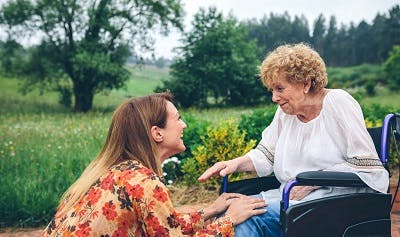
Most conventional treatments for PTSD include psychotherapy and medications. However, there are supplemental treatments such as meditation that can also provide therapeutic benefits. Below, we’ll discuss treatment interventions that can help individuals overcome post-stroke PTSD.
Psychotherapy
Psychotherapy or ‘talk therapy’ encourages individuals to speak with a professional to identify triggers of PTSD and modify the negative emotions or behaviors associated with them. A psychologist can help individuals confront the traumatic event and suggest more effective ways to react when reminded of it.
Medication
Individuals may also be recommended medications to manage PTSD after stroke. Antidepressants such as SSRIs and SNRIs are often prescribed to treat feelings of anxiety or dissociation associated with PTSD. The use of medications may help individuals participate more openly in psychotherapy, which can help them make more progress in each session.
Meditation
Meditation encourages individuals to practice mindfulness and concentrate on their breathing to promote relaxation, self-acceptance, and better focus.
One type of meditation that can help stroke survivors overcome PTSD is loving-kindness meditation. This practice focuses on boosting feelings of compassion for yourself and others by repeating phrases of affirmation that invoke safety, happiness, health, and peace.
Although individuals often personalize the phrases used during loving-kindness meditation, commonly used examples include: ‘May I be healthy’, ‘May I be Safe’, and ‘May I be at ease and happy’. A study showed that loving-kindness meditation helped reduce depression and PTSD in post-war veterans while boosting feelings of self-compassion and mindfulness.
Loving-kindness meditation can be practiced in any setting and for any period of time. If you are relatively new to meditation and mindfulness, there are also various apps and videos online that you can use to guide your practice initially.
Turning Trauma into Growth: “Post-Traumatic Growth”
Now that we’ve addressed various treatment options, let’s discuss a positive outcome of post-traumatic stress: post-traumatic growth.
Post-traumatic growth refers to how we become a better version of ourselves through hardship. Dealing with PTSD after stroke often causes the survivor to look within and develop inner strength.
Psychologist Richard Tedeschi, one of the pioneers in the study of post-traumatic growth, did an important research project that surveyed survivors of severe injury and people who had lost their spouses. He found that, although these individuals wished that they hadn’t been paralyzed or lost their spouse, they grew into better people because of it.
As Tedeschi continued his research through a follow-up study of more than 600 trauma survivors, he found positive changes in these 5 areas:
- Renewed appreciation for life
- New discovered possibilities for themselves
- Increased personal strength
- Improved relationships
- Increased spiritual satisfaction
While no one wishes hardship upon themselves or others, the idea of post-traumatic growth can help inspire hope and motivation for survivors on the road to recovery. Rehabilitation requires hard work day in and day out, and motivation can help survivors continue to improve.
There’s a popular stroke recovery quote that says, “grow through what you go through.” This embodies the idea of post-traumatic growth, and how survivors can take their trauma and hardship and use it to become stronger after stroke.
PTSD After Stroke: Key Points
Strokes are life-threatening events that can lead to the development of PTSD. Individuals with PTSD may develop avoidant, fearful, or anxious behaviors. For example, individuals may become extremely anxious and always on guard in case another stroke happens.
Fortunately, there are ways to overcome PTSD after stroke. This may include participating in psychotherapy or trying alternative treatments such as meditation. Medication can also help individuals find relief from the unwanted effects of PTSD.
When survivors can persevere through the hardships that often accompany stroke recovery, then can encounter the surprising up-side of PTSD, which is post-traumatic growth. We hope this article helps you better understand how to identify the signs of PTSD after stroke and how to treat it.
